When scouting for barn finds, it sometimes helps to expand your definition of a barn. Take for example airplane hangars. Many pilots are also car nuts, and they often park their four wheeled collectibles right beside the ones with wings. Steve McQueen took this concept one step further. At the end of his life, he kept a number of his toys in a hangar at the Santa Paula Airport. If that wasn’t cool enough, he also lived there for a while! If Steve was still around, he would probably be bidding on this hangar bound 1929 Plymouth coupe found on eBay in Elizabeth, Colorado. With a Buy It Now price of $11,500, this well kept Plymouth would look good in any enclosure.
In Barbara McQueen’s book Steve McQueen-The Last Mile, Steve’s wife documents both in words and pictures the last three years of the film icon’s life. Much of that time was spent in his airplane hanger at the Santa Paula Airport. Stuffed with motorcycles, antiques, and the occasional car, the couple lived in the hanger for six months straight. His routine every morning was to open the hanger door and watch the sun rise as he drank coffee. In the evenings, he would sit around and drink Old Milwaukee beer with anyone who might stumble by and just hang out like a normal guy. Sadly, McQueen died of cancer in 1980, but at least he got to spend a lot of time living as he saw fit in his giant toybox.
As for toyboxes, the pictures here show that this Plymouth lives in a pretty cool toybox as well. Looking totally at home next to its yellow and white hangar mate, this Plymouth appears to be an older restoration that has aged gracefully. The maroon body seems free from any major damage. The paint looks to be fading a little, but it could be made presentable with some gentle polishing.
The wood artillery type wheels are smartly combined with black wall tires. Unfortunately, the white wall on the back would have to be replaced. When going to a car show, it is hard to find a prewar car without wide white walls. In reality, they weren’t that common when these cars were new. Mostly customers were talked into them at the dealership as a mark up item. Owners treated cars just as abusively as we do today, and I doubt they liked scrubbing huge whitewalls very much. Somehow we have forgotten that the good old days weren’t always so good!
The seller tells us that the car is in pretty good condition minus a few scratches and scrapes. The former owner stored the car in the hanger for a long time, and only drove it occasionally. The windshield and both door glasses will have to be replaced though. One had a BB shot through it, and the others have cracks in them. This is kind of unusual, and I wish we knew the story behind how three panes of glass got broken on one car. We also don’t know why the car is on wheel dollies either. The ad doesn’t outright say that the car doesn’t run, but there may be fuel issues due to storage.
The interior has been refurbished, but I am not certain that the blue color or upholstery is factory correct. Most likely this car was refurbished at the owner’s whim, without regard to the AACA rule book. There is nothing wrong with that attitude if it saves an old car from the boneyard. However, keeping things factory correct does help when it comes time to sell.
Under the hood we see an example of the four cylinder engine that powered the first generation of Plymouths. This Ford Model A competitor displaced 175 cubic inches and put out 45 horsepower. Model As packed 201 cubic inches, but put out just 40 horsepower. The big advantage was brakes. While Ford would cling to mechanical brakes for more than a decade after this car was produced, Plymouths came standard with hydraulic brakes. Collectors covet early Plymouths as drivers because they were, at the risk of being attacked by Model A lovers, a better car. This is the reason why the Plymouth brand succeeded when dozens of low priced cars failed in a crowded Depression era marketplace.
The Buy It Now price is set at $11,500, but there is also a button to click if you want to make an offer. With prices on prewar cars slowly deflating, an offer might be in order here. It looks like there might be a little work to do to get this pleasant Plymouth back on the road, but I don’t think you would regret the purchase. It is a car that you could enjoy without worrying about being too pretentious. Plymouths of this era are reliable enough to drive every day if needed, but plain enough to not get messed with in the hardware store parking lot. Steve McQueen loved his hangar in Santa Paula because he could be a regular guy there. He would probably buy a car like this to go to town or to pick up his favorite Chinese take out for dinner. Like him, it is cool without being too flashy.
Could you see yourself living in a hangar with this Plymouth as your daily driver?





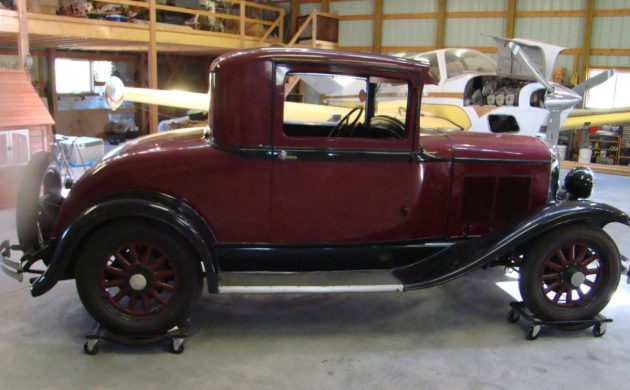
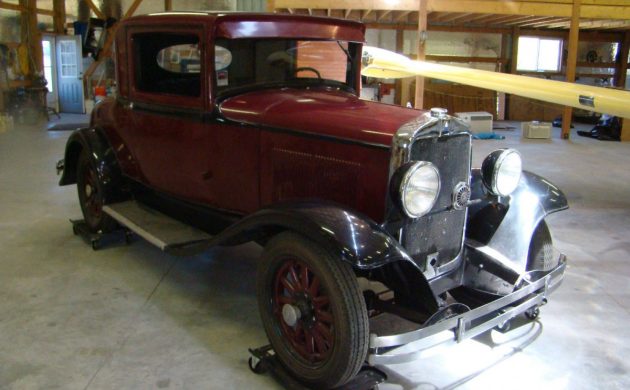

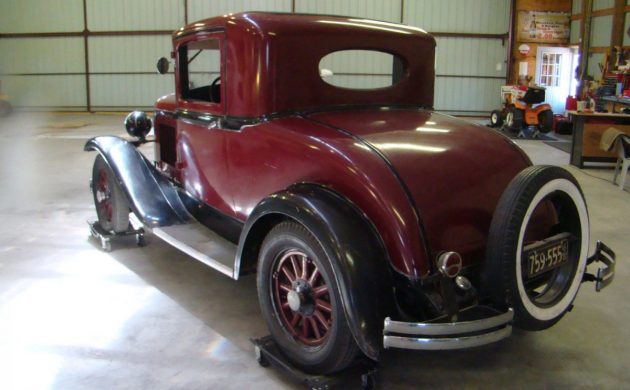



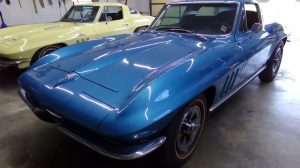
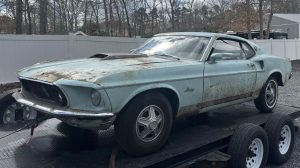




It’s a Chrysler product of old so of course I like love it. As much as I love red Cars the interior looks out of place so my first move would be to match things up. In this case I think I’d want to repaint the car a matching blue with maybe a hint of gray in the blue. Everything black I would repaint black. This engine is the prelude to there flatty 6 cylinder with a reputation of being both rugged and reliable with a long service life. Just another car I’d love to have but can’t afford. Maybe it’s a good thing I’m poor if I was rich I’d have a car hoarding problem. It nice to dream about it and this site gives plenty of opportunities to drawl over this daily car candy. JMO.
@canadainmarkseh, how could hoarding cars ever be considered a problem?
This one looks like a good score for someone. Make sure it’s in good mechanical condition and just drive the damned thing!
Cool car, I had a ’29 model U. This is actually a ’30 Plymouth. Blue interior is awful but could be changed.
Nothing against the Plymouth, it’s a beautiful piece of work, but give me the x35 Bonanza in the background any day.
Cool Car, reminds me of the 32 Plymouth 4 door touring car that sat outside a neighbor’s house a mile or so down the country road where I grew up in the 50’s.I was amazed that it had a factory radio in it. The neighbor said the car belonged to their son who lived several states away but planned to someday return to fix the old car up, but of course that never happened it just rotted away. I’m sure glad this one survived all these years.
Beautiful car – except it is a model 30U, 1930 or 1931.
The Q and U model Plymouths used FEDCO serial numbers with plates attached to the instrument panel. The 30U switched to a seven digit serial number, beginning at 1,500,001. First 1931 model 30U at 1,530,246 and the last 30U was 1,570,188. The seven digit serial numbers plates were mounted on the passenger side front door hinge pillar. You can see it on this car in the shot of the instrument panel. Can’t make out the number, though.
Also, the rear oval window and the raised area around the emblem on the radiator shell were used on the 30U but not on the Q and U.
The green sedan appears to be a 1929 Plymouth model U, though.